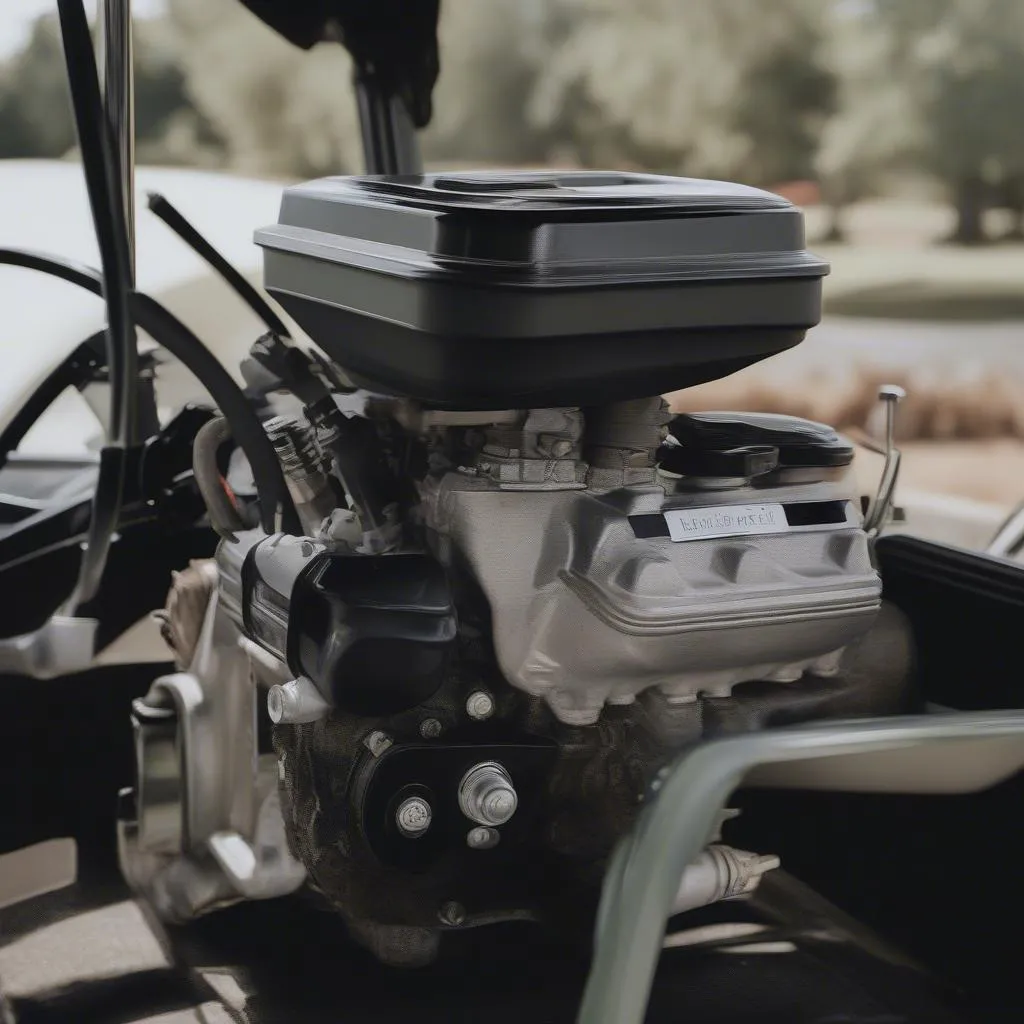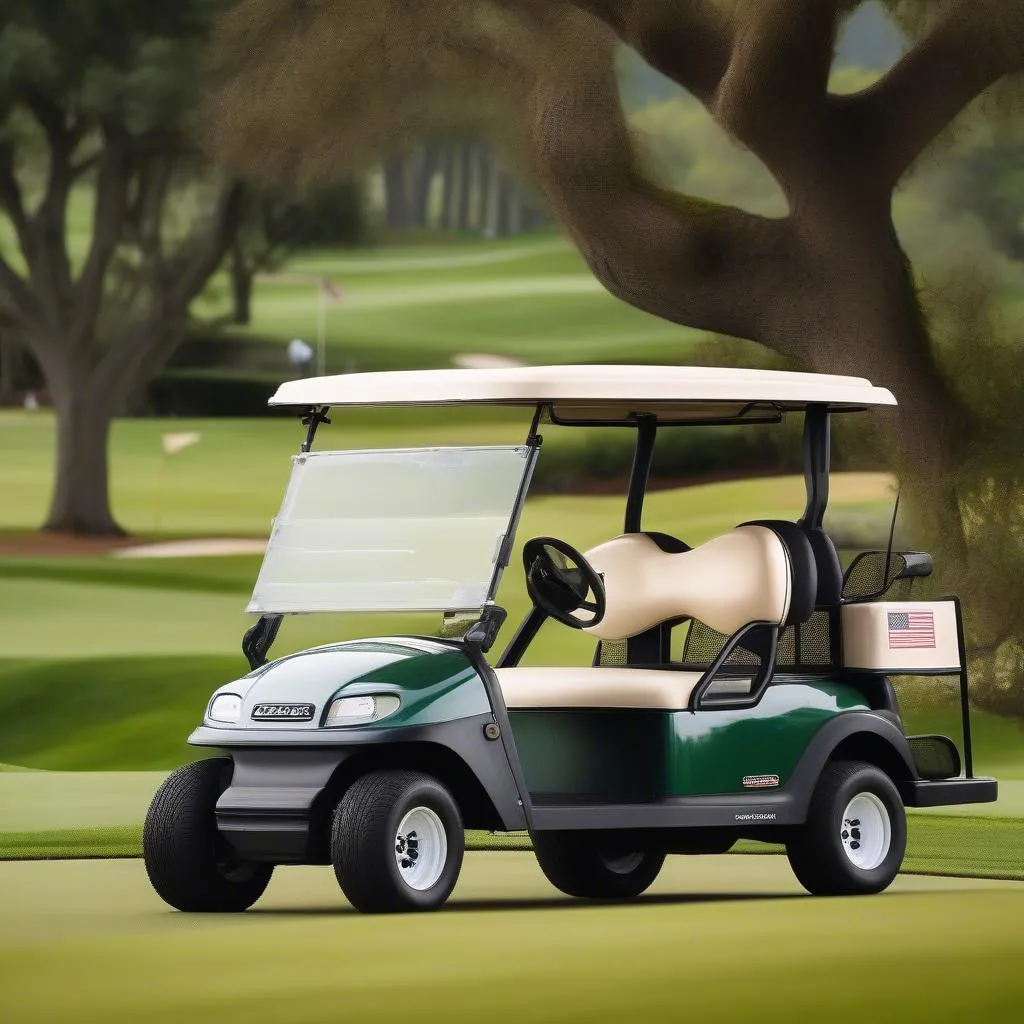Picture this: you’re cruising down the fairway on a sunny afternoon, the breeze rustling through your hair, the scent of freshly cut grass filling the air. Your trusty Club Car golf cart hums along, a familiar companion on countless rounds. But what happens when your old reliable starts to show its age?
Don’t worry, you’re not alone! Older Club Car Models, like the resilient DS or the ever-popular Carryall, are known for their durability. However, even these workhorses need some TLC after years of loyal service. This guide delves into the world of older Club Car models, providing you with the insights you need to keep them running smoothly.
Understanding the Appeal of Older Club Car Models
Why are older Club Car models still so popular? Well, like a classic Ford Mustang or a vintage Chevrolet Corvette, these carts have character.
“Many people find the simplicity of older models appealing,” explains automotive expert Robert Anderson, author of “The Garage Guru’s Guide to Golf Carts.” “They’re often easier to work on and parts are readily available.”
From a mechanic’s perspective, these older models offer a transparent design. Unlike their modern counterparts packed with electronics, older Club Cars allow for a more hands-on approach to maintenance and repair. This can be a significant advantage for those mechanically inclined, saving both time and money.
Common Issues and How to Tackle Them
Let’s face it, every vehicle, regardless of age or brand, will encounter hiccups along the way. Older Club Car models are no exception. Here are some common issues you might encounter:
1. Battery Blues
The Achilles’ heel of any electric vehicle, batteries are often the first to signal trouble. If your cart is sluggish or refuses to start, the culprit might be a dying battery.
Solution: Regular battery maintenance, including checking water levels (for flooded lead-acid batteries) and keeping terminals clean, can prolong battery life. When the time comes for replacement, consider upgrading to newer battery technologies like lithium-ion for enhanced performance and longevity.
2. Faulty Solenoid
The solenoid acts like the starter motor in a gas-powered vehicle. A clicking sound when you press the accelerator might indicate a failing solenoid.
Solution: Testing the solenoid with a multimeter can confirm its functionality. If faulty, replacing it is a relatively straightforward process, even for those new to DIY repairs.
3. Worn-Out Speed Controller
This component regulates the electric current flowing to the motor. A jerky ride or sudden surges in speed can be telltale signs of a failing speed controller.
Solution: Inspect the speed controller for any burnt components. Replacement is often the most viable option, especially with older models where repairs might be challenging.
 Vintage Club Car Engine
Vintage Club Car Engine
Keeping Your Older Club Car Running Strong
Prevention is always better than cure. Here are a few tips to keep your older Club Car model happy and healthy:
- Regular Maintenance: Just like your car, your golf cart thrives on regular check-ups. Inspecting tire pressure, cleaning the air filter, and lubricating moving parts can prevent minor issues from escalating into major headaches.
- Storage Savvy: Proper storage, especially during the off-season, can significantly extend the life of your cart. Fully charge the batteries before storing and consider using a trickle charger to prevent them from draining completely.
- Embrace the DIY Spirit: Older Club Car models are surprisingly DIY-friendly. Familiarize yourself with basic maintenance tasks and consult online resources or forums for guidance. You’ll be amazed at what you can accomplish with a little effort.
FAQs About Older Club Car Models
Here are some frequently asked questions about older Club Car models:
- Can I upgrade the batteries in my older Club Car? Absolutely! Upgrading to newer battery technologies like lithium-ion can provide longer run times, faster charging, and improved overall performance.
- Where can I find parts for my vintage Club Car? Online retailers, specialized golf cart shops, and even some Club Car dealerships carry parts for older models. Don’t be afraid to ask around!
- Is it worth restoring an older Club Car model? This depends on the cart’s condition and your sentimental attachment. However, a well-restored older Club Car can provide years of enjoyable service and even become a valuable collector’s item.
Explore More About Club Cars
Looking for more information on Club Car models? Check out these insightful articles:
Need a Helping Hand?
We understand that dealing with car diagnostics can be challenging. If you’re facing any issues with your vehicle’s electrical system, don’t hesitate to reach out. Contact us on WhatsApp at +84767531508. Our team of auto repair experts is available 24/7 to provide support and guidance.
 Classic Club Car on Golf Course
Classic Club Car on Golf Course
Driving into the Sunset
Owning an older Club Car model is like owning a piece of history. These carts have a story to tell, and with a little care and attention, they can continue to provide years of reliable service. Embrace the vintage charm, enjoy the simplicity, and keep those wheels turning.
Do you have any fond memories or experiences with older Club Car models? Share your stories and insights in the comments below! Let’s keep the conversation rolling.